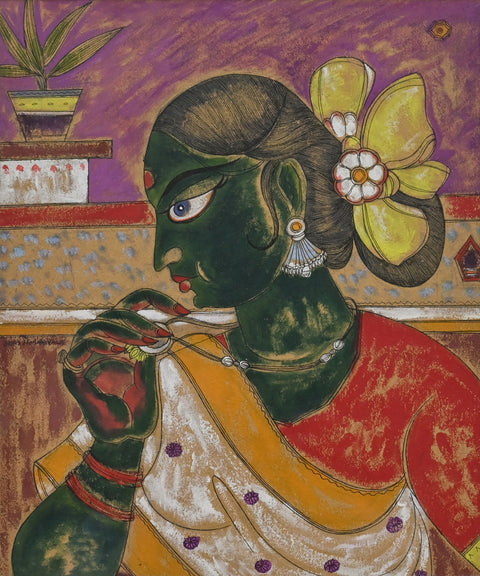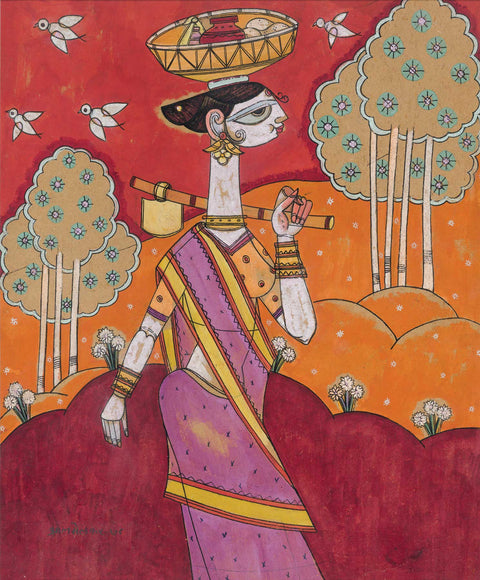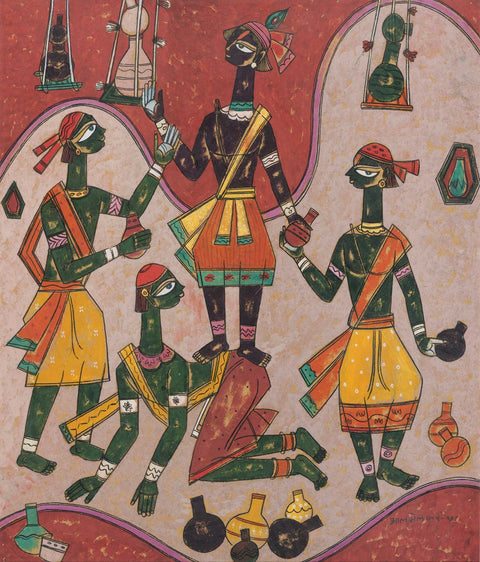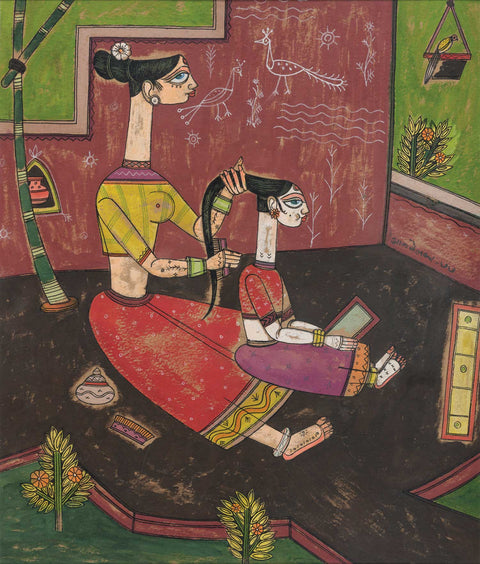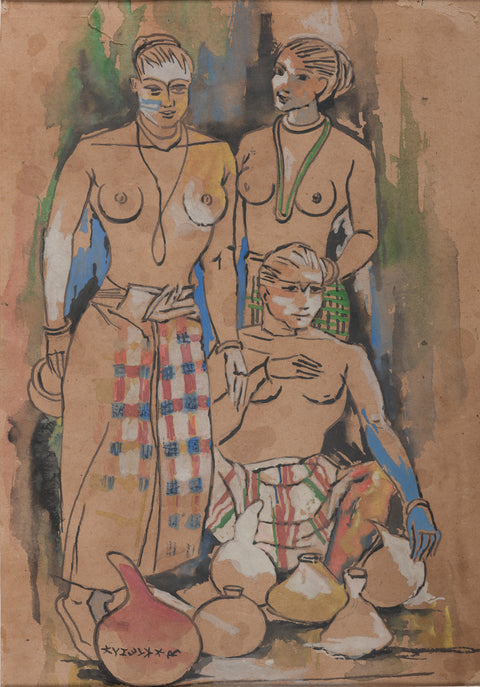A A Almelkar
Abdul Rahim Almelkar believed that he must have learnt painting when he was still in his mother`s womb, much like Arjuna`s son Abhimanyu in the Mahabharat. "My mother was busy embroidering all through her pregnancy and I probably inherited art from her at that stage," he says.Born in Solapur, Maharashtra, he began painting at the young age of seven. After a conventional education in a local school, he joined the Sir J. J. School of Arts in Mumbai. During his student years, he won several awards at shows organized by the Art Society of India and the Bombay Art Society.Almelkar considered Khatri, a folk painter from Gujarat, as his true teacher. Khatri instilled into the young aspirant a pursuit for perfect draftsmanship. "In those days, there was `no inner eye and outer eye`. A single vision informed the work of most artists," says Almelkar. He belonged to a tradition of stylized "Indian" paintings; with a lot of detailing and elements from miniature art tradition that were at its peak when he was still studying at the art college.Like all erstwhile artists, he branched out early in his career and evolved his own style. Ordinary folk, fishermen and tribal people were central to most of his works. He presented the tribal people against the background of simple decorative motifs that they used to beautify their homes with and which also had religious meanings. Almelkar often traveled in the jungles of Vidharbha (Maharashtra) sketching birds and trees in sanctuaries and the colorful tribal people inhabiting those localities.Keeping in mind the fundamentals of drawing, he did both naturalistic as well as figurative studies, with just a touch of stylization to accommodate a folk style. It recalls to the mind traditional Javanese Art, which in turn has been influenced by the art of greater India.Applying colors with his fingers and finishing the work with a clear outline in waterproof ink, he retained a sense of lndianess in his depictions, which in almost all cases were simple portrayals of people. He also experimented with cardboard as the base of his works. Almelkar often used the paste of cowries to import a shine to the surface of his paintings.Almelkar was the Principal of a private art institute called `Nutan Kala Mandir` in Bangalore. He later joined as a lecturer at the Sir J.J School of Arts in 1968. His shows won acclaim in Malaysia and in other Asian capitals too.Almelkar passed away on December 1982 at the age of 62.
His three exhibits with us are three water color on cardboards and one water colour on paper.




